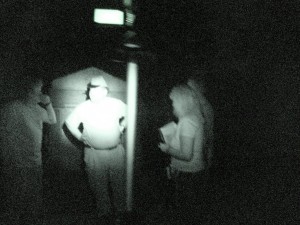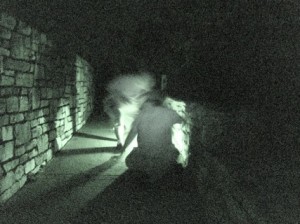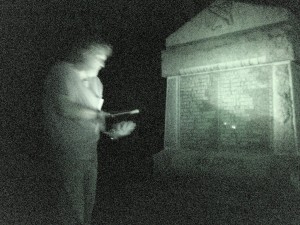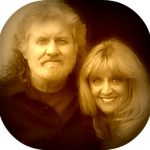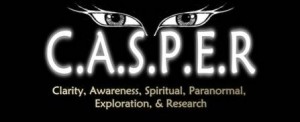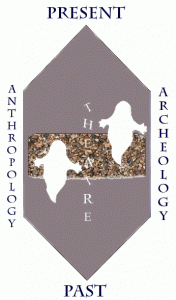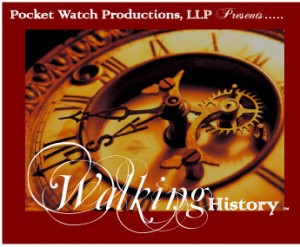An excavation is an archaeologically-sensible contemporary practice that unearths past material remains. I conduct a specific type of non-evasive “excavation” at archaeological sites some call “HAUNTED”. These excavations are ethnographic participant-observation immersions into various segments and layers of particular “ghost cultures”. A “ghost culture” is what is left of the past at these sites. My excavations focus on interactive cultural presence. These excavations “raise” questions of moral and ethical issues, and responsibilities regarding the participatory mode of the fieldworker, stages of authenticity, types of mediation, and ways to legitimize these excavations. This is Para-Archaeology, working on what remains of interactive past “material culture” at “haunted” locations.
What must be considered at these sites are the transformative implications of both contextual/resonating excavating practices and those characterized by demand and command “ghost hunts”. Situated within the excavation process is a present-imposed perspective influencing what is recovered and recoverable. Interactive haunted sites are spaces of tension, where the past unfolds and time is a multi-layered and often percolating palimpsest. The excavation must proceed with extreme caution and delicacy. Once the excavation begins, the past is disturbed. The goal is to create the least resistance toward the recovery of the past material remains. This insures more “interaction” with the past!
A “ghost hunt”, with its emphasis on technology and a “demand and command attitude”, is HIGHLY disturbing to past cultural worlds. This disturbance can be seen in the paucity of material remains that are exposed and unearthed in this type of fieldwork (simple EVP, “anomalous” photo and video trace elements). There are little or no integrated cultural matrixes (multiple, simultaneous contextual sensory cultural elements) that are exposed, as in our para-archaeological fieldwork.
Archaeology is no longer a discipline governed by time (as past event) or distinct physical remains (as reflecting merely a “vision” of the past). The material past that is unearthed at some locations also contains “other” (and multiple) sensory elements, some occurring “live” relative to the participatory acts of an excavation.
A pat act (or event) becomes present under these circumstances. Time transforms to the actuality of a manifestation (not its historical narrative), allowing “clues” (as forensic evidence) to be recorded and measured by the excavation team. These “clues” are individual (or group) cultural behavioral traces that may be auditory, tactile, olfactory, or combinations of various elements (and not just visuals of past material culture).
The excavation, as a para-archaeological practice, is a site and space-specific performance. It changes the nature of archaeology. The fieldwork becomes part of contemporary “haunting archaeologies”:
“Archaeology is to regard itself as a practice of cultural production, a contemporary material practice which works on and with the traces of the past and within which the archaeologist is implicated as an active agent of interpretation” (Mike Pearson & Michael Shanks, Theatre/Archaeology 2001:111).
How much relevant (and centered) the fieldwork becomes when the archaeologist is also a trained actor, as I am! That makes these “ghost excavations” especially contextual as para-archaeological fieldwork. The research is no longer a “ghost hunt”. It becomes the unearthing of para-physical consciousness that survives the death of the body.
“Haunted” sites (those that contain remains of multiple pasts) are archaeological by nature. They are not fixed, static entities that can simply be measured and recorded by a horizontal “walk-through”, or voiced commands and demands. These sites are still “open” (though largely buried). They are present (not past) fluid spaces of continuing performances. They are palimpsests, available to be “read” as layers of “ghost stories”, not as measurements of “deviant” readings!
Performance has been described as “organized human behavior presented before witnesses” (Pearson & Shanks 2001:XII). A “ghost”, as an interactive presence of para-physical consciousness, becomes a “witness” in an “excavation” by responding (in some manifesting cultural sensory form) to a participatory act during the “P.O.P” process, described in my other books.
I consider “P.O.P.” a performative sequence of contextual acts and observations. It’s an ethnographic way looking at both past material remains, and interactive actual cultural presence in a new “layered” perspective (and responding directly to that presence through contextual “identity” markers). It is “thinking outside the box” of “ghost hunting”, paranormal reality TV, and “demon” labeling!
“P.O.P.” is enacted in a “S.I.M.S.” (Sensory Information Memory Settings). These spaces are discovered in the initial peripatetic audio/video walk/historical narration at the beginning of all excavations. The S.I.M.S. is the space of excavation. This is a space whose contents (as sensory material remains) and occupants (as interactive presence) are removed from our everyday, not theirs! These are spaces located in-between the expected and the unexpected, where manifestations occur, but preconceptions are always challenged (requiring more ethnographic research). “P.O.P.” shifts one reality (the contemporary) to a series of layered “others” (the actuality of multiple percolating past presences). It changes the space, but always to a state of temporality, unfolding it. It is not a permanent change. It is the constructed and recovered past, contained within its own frame of temporal (transforming) parameters.
“P.O.P.” unearths those interactive traces that are left behind in the aftermath of a past performance event, whatever that event (no matter how mundane or habitual it is) might be that survives in the memory of a para-physical consciousness. It doesn’t have to be the moment of death (or the moments before), or even acts that led to someone dying (such as a battlefield death, a murder, or a suicide.) Interactive past material culture consists, for the most part, of habitual, routine memory practices.
The “P.O.P.” process shifts archaeological practices from the archaeological performance of unearthing “objects” and “features” to an interactive archaeology with “live” past subjects (and/or the spectral traces of their continuing cultural behaviors). This is practice-based archaeology. This is a “move from products of research (artifacts/features) to methods of production” (M. deCerteau 1997:49, Culture in the Plural). “P.O.P.” re-directs archaeological excavation from physical “digging” to telepathic (“extended mind”) resonance through acts that awaken past memory practices. “P.O.P.” assists in the creation and the development of Para-Archaeology as a sub-discipline of contemporary archaeology!
